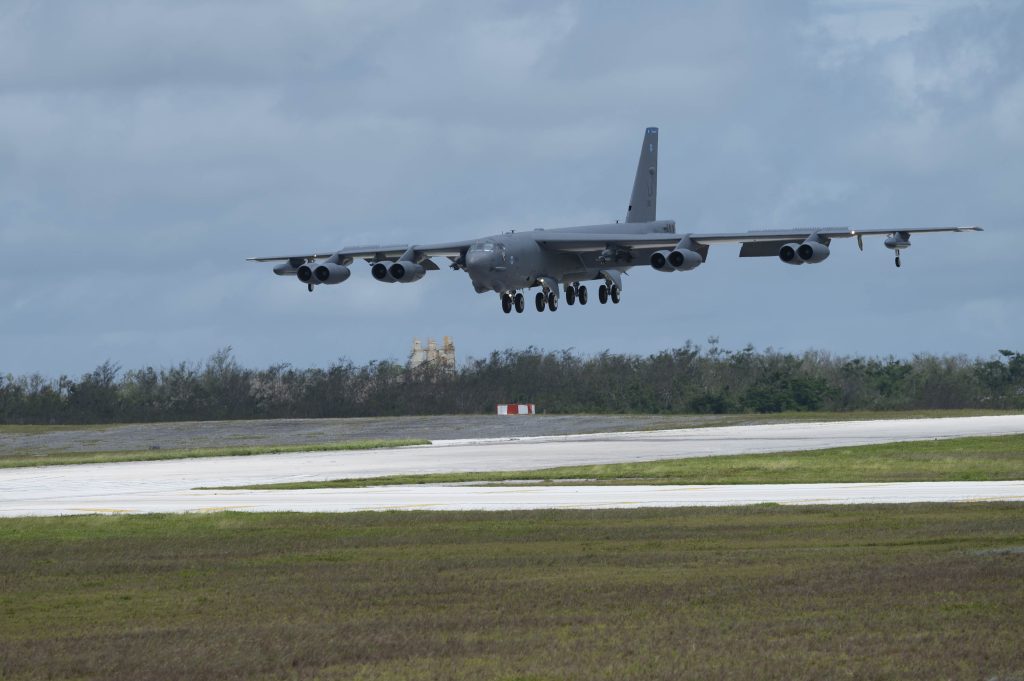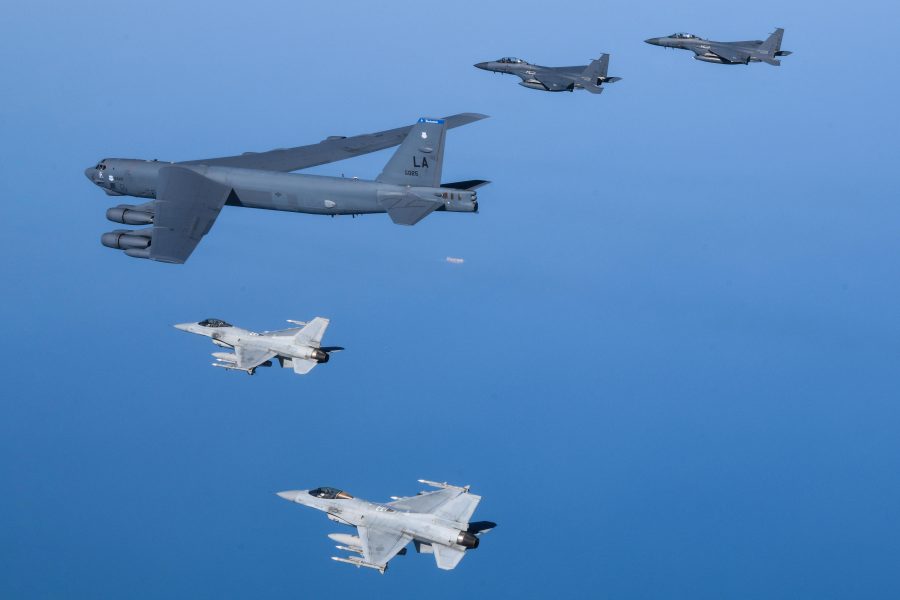Editor’s Note: A previous version of this article incorrectly stated this is the first time ever a B-52 has landed in South Korea. It is the first time in at least three decades. Air & Space Forces Magazine regrets this error.
The U.S. Air Force is celebrating the 70th anniversary of the U.S.-South Korea alliance with a huge display of airpower at the 2023 Seoul International Aerospace and Defense Exhibition this week.
Most notably, a B-52H Stratofortress is slated to land on the Korean Peninsula for the event—the first time the famed bomber has touched down in South Korea in at least 30 years, according to the Seventh Air Force.
Also during the exhibition, scheduled from Oct. 17. to 22 in Seoul Air Base, the USAF will show off eight other kinds of aircraft through static displays and aerial demonstrations, according to Pacific Air Forces, including:
- F-22 Raptor
- F-16 Fighting Falcon
- A-10 Thunderbolt II
- C-17 Globemaster III
- C-5 Galaxy
- KC-135 Stratotanker
- U-2 Dragon Lady
- E-3 Sentry
The nuclear-capable B-52 is set to execute two flyovers before landing elsewhere in the nation.

“These flyovers, air demonstrations and static displays, including the landing for the B-52 on the peninsula, is part of our continued pledge to promote peace, stability and prosperity on the Korean peninsula.” said Maj. Rachel Buitrago, 7th Air Force Public Affairs director, in a release.
The B-52 Stratofortress, known as the BUFF, is the Air Force’s primary standoff cruise missile carrier. The H model is now the last serving variant of the Stratofortress, which has been in service since the 1950s.
While the B-52 has rarely landed in Korea, it has conducted several recent drills near or over the Korean Peninsula. On June 30, multiple B-52s from Barksdale Air Force Base, along with F-16s, F-15Es, and South Korean F-35As and KF-16s, conducted a joint flyover of the nation.
Then, on July 13, the long-range bomber was accompanied by F-16s and three ROK Air Force F-15K aircraft for a combined air training session over the peninsula. That exercise followed claims from North Korea that it launched a solid-fueled intercontinental ballistic missile on July 12, with the capacity to reach the continental United States.
North Korea has continued to carry out numerous missile launches this year, including the most recent test in September when it fired two short-range ballistic missiles into the sea off the eastern coast.
“We still face ongoing challenges from North Korea, including its dangerous and destabilizing missile testing program, and from others who would undermine the rules-based international order,” Defense Secretary Lloyd Austin said in April, when he welcomed South Korean President Yoon Suk Yeol to the Pentagon.
Austin and President Joe Biden have pledged to ramp up joint military exercises between the U.S. and South Korea, including those with nuclear-capable assets like strategic bombers or ballistic missile submarines. Just last week, the aircraft carrier USS Ronald Reagan made a port call in Busan, South Korea.
“2023 marks 70 years of alliance between the United States and the Republic of Korea—one that has proven ironclad in the face of challenges over the many decades. It is among the most interoperable, capable, and dynamic bilateral alliances in the world,” Lt. Gen. Scott Pleus, Seventh Air Force commander and U.S. Forces Korea deputy commander, said in a statement.
“We are honored to demonstrate our commitment to this partnership through our U.S. participation in Seoul ADEX 23 as part of our continued pledge to promote peace, stability and prosperity on the Korean peninsula,” Pleus added.
This biennial exhibition, the largest of its kind in Northeast Asia, presents aircraft, ground equipment, aerial demonstrations, and draws aviation and aerospace experts and defense personnel from around the world.
